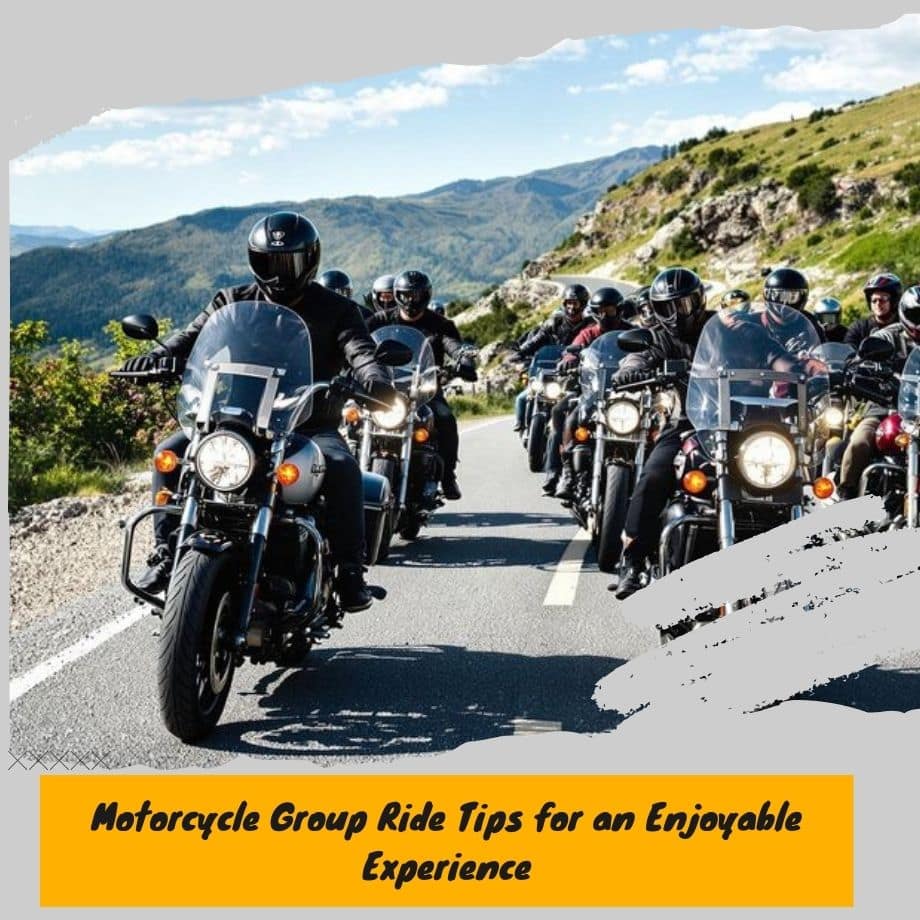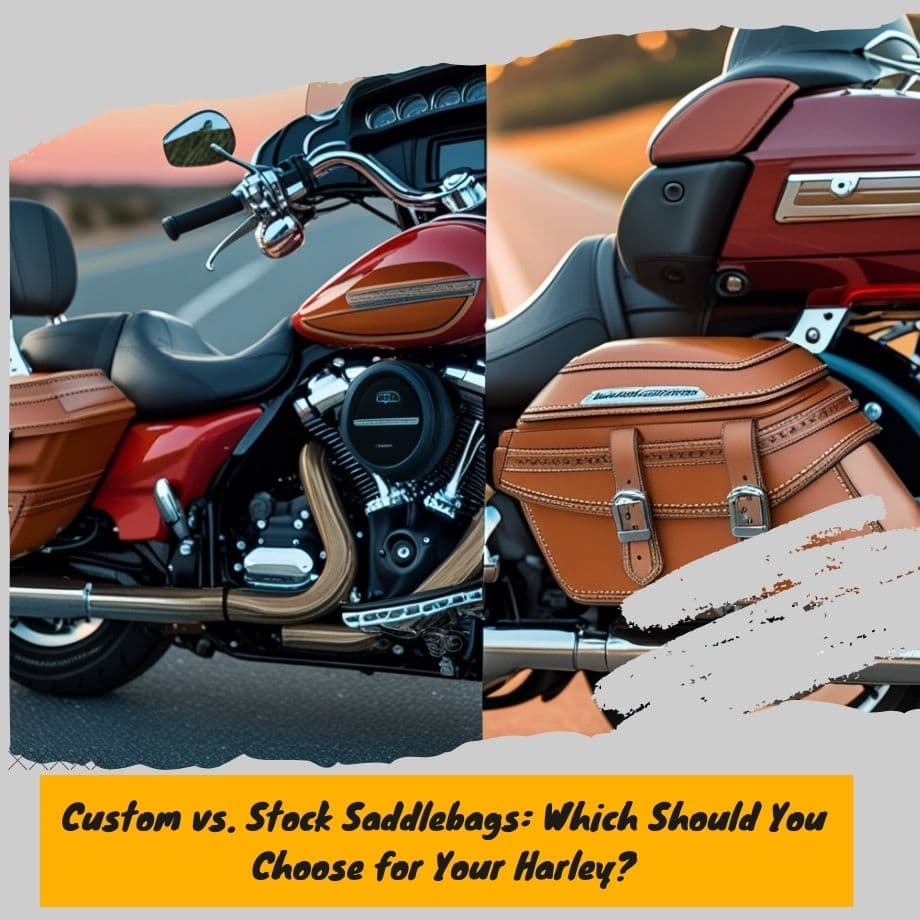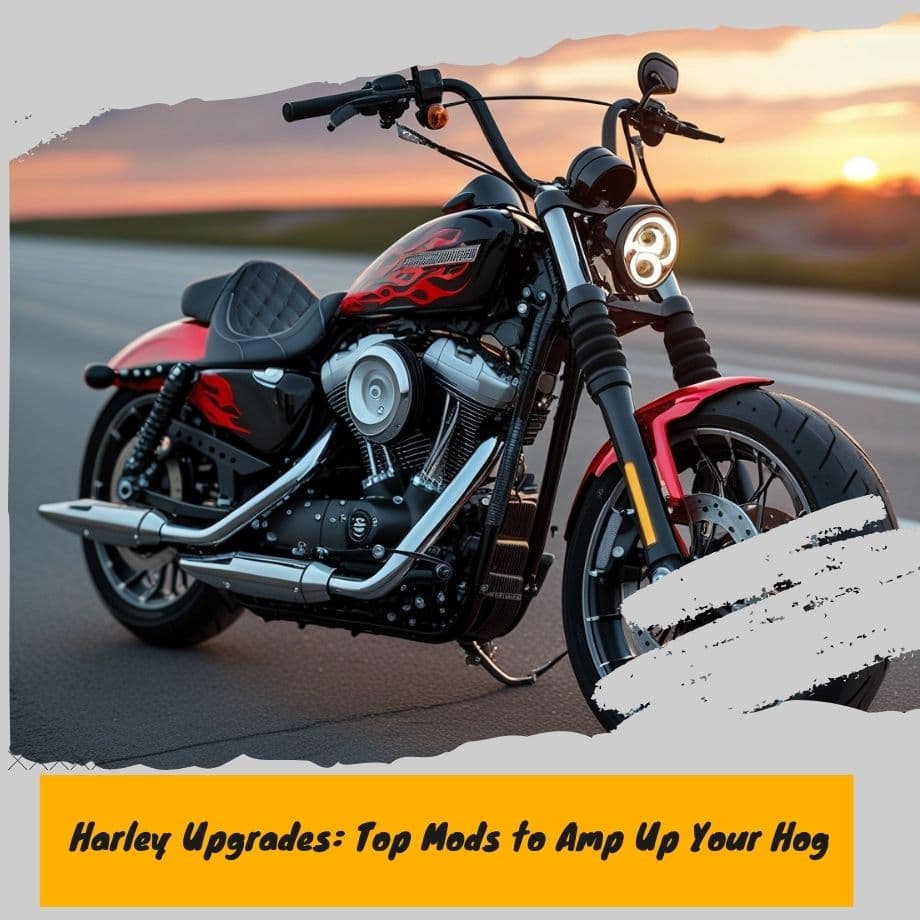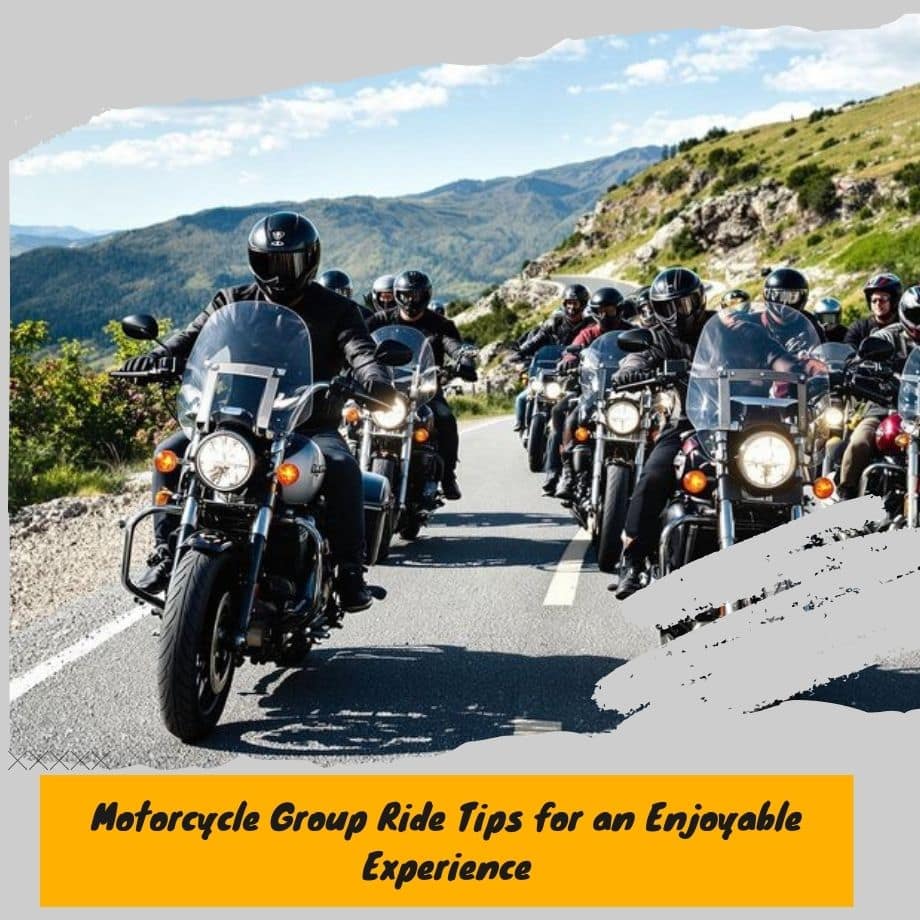Essential Motorcycle Group Ride Tips for a Safe and Enjoyable Experience

Riding motorcycles with a group is a blast, but it takes a bit of planning to keep things fun and safe. Whether you're hitting the road with old friends or joining a new crew, having some solid tips up your sleeve can make all the difference. From gearing up to setting the pace, here's what you need to know for a smooth ride.
Key Takeaways
- Always check your bike before heading out; safety first!
- Keep communication open with hand signals or intercoms.
- Stick to a staggered formation to maintain safe distances.
- Know your limits and ride at a comfortable speed.
- Have a route planned with regular stops for rest and fuel.
Preparing for Your Group Ride
Conduct a Pre-Ride Motorcycle Inspection
Before you even think about hitting the road with your motorcycle group, a detailed pre-ride inspection is a must. Checking your bike thoroughly can prevent unexpected breakdowns and ensure everyone's safety. Here's what to focus on:
- Tire Pressure: Make sure your tires are neither underinflated nor overinflated. This affects handling and can increase the risk of accidents.
- Oil Levels: Check your oil levels to avoid engine troubles during the ride.
- Brakes: Reliable brakes are crucial. Test them to confirm they're working properly.
These checks are not just for your safety but for the whole group. By ensuring your bike is in top shape, you contribute to a smoother ride for everyone.
Gear Up Properly
When it comes to group rides, safety gear isn't just a suggestion—it's a necessity. Proper gear can make a world of difference in an accident. Here’s a quick list of what you need:
- Helmet: Protects your head in case of a fall.
- Riding Gloves: They help with grip and protect your hands.
- Sturdy Jacket: Shields you from the weather and road rash.
- Riding Pants: Keep your legs safe.
- Protective Boots: Safeguard your feet and ankles.
Wearing the right gear shows you’re serious about safety, and it sets a good example for others in the group.
Arrive Prepared
Preparation isn't just about your bike and gear. Arrive at the meeting point fully ready for the ride. Fill up your gas tank to avoid unnecessary stops. Bring a cellphone for emergencies—it’s your lifeline if something goes wrong. A first-aid kit and a basic tool kit can be lifesavers for minor injuries and mechanical issues.
Being well-prepared ensures you can tackle any hiccups along the way, keeping the ride smooth and enjoyable for everyone.
Before you start your engines, make sure to gather all riders to discuss the route, hand signals, and emergency procedures. This ensures everyone knows what to expect and can handle any situation that arises.
Effective Communication Techniques
Utilize Hand Signals
Hand signals are a fundamental way to keep everyone on the same page during a group ride. They're like the secret language of bikers, ensuring everyone knows what's happening without a word being spoken. Using clear and consistent hand signals helps maintain the flow and safety of the ride.
For instance, a simple hand wave can indicate a stop, while pointing can alert others to a road hazard. It's all about making sure everyone knows what to expect. Familiarize yourself with the Motorcycle Safety Foundation's hand signals for a universally accepted set of gestures.
Invest in Rider-to-Rider Communication Systems
In today's tech-savvy world, investing in a good rider-to-rider communication system can make a world of difference. These systems, like those from Cardo Systems or Sena Technologies, allow you to chat with fellow riders without shouting over the engine noise.
They’re especially useful for the lead and sweep riders, who need to coordinate the group's pace and route changes. A quick word of advice: make sure everyone knows how to use their device before hitting the road.
Hold a Pre-Ride Meeting
Before you rev up and hit the road, gather everyone for a quick pre-ride meeting. This isn’t about making things formal; it’s just a chance to get everyone on the same page. Discuss the route, planned stops, and hand signals.
It’s also a good time to exchange contact information in case someone gets separated. A few minutes spent in discussion can save a lot of confusion later. Plus, it sets the tone for a cooperative and enjoyable ride.
Maintaining Proper Formation and Spacing
Ride in a Staggered Formation
Riding in a staggered formation is a staple for group rides. It’s like the sweet spot between safety and visibility. Picture this: the lead rider is on the left side, and the next rider is about a second behind on the right. This zigzag pattern continues throughout the group.
It gives each rider enough room to maneuver while keeping the group tight enough to be seen by other road users. This setup is crucial for maintaining order and ensuring that each rider has enough space to react to unexpected situations. It’s perfect for open roads and highways where the group can spread out a bit.
Keep Safe Following Distances
Now, this is where things get a bit technical. In a staggered formation, you want to maintain at least a one-second gap with the rider directly in front of you and a two-second gap with the rider diagonally ahead. This spacing helps prevent collisions and gives riders ample time to react to sudden changes.
When the road gets twisty or visibility drops, consider switching to a single file formation to allow more room for maneuvering. Switching to a single file formation with ample spacing is especially useful in tricky spots, ensuring everyone can handle obstacles smoothly.
Manage Different Skill Levels
Not everyone in your group will have the same riding experience, and that’s okay. The key is to manage these differences effectively. If you have newer riders, place them in the middle of the group. This positioning allows them to follow the lead of more experienced riders while being protected by the sweep rider at the back.
It’s also wise to keep the group size manageable, ideally between five to seven riders. If you have a larger group, consider breaking it into smaller sub-groups with designated lead and sweep riders. This approach keeps things organized and ensures everyone rides within their comfort zone.
Maintaining proper formation and spacing in a group ride isn't just about looking cool on the road. It's about creating a safe environment where every rider can enjoy the ride while feeling secure. When each rider knows their place and maintains the right distance, the group flows like a well-oiled machine, making the ride enjoyable for everyone.
Speed Control and Riding Within Your Limits
Ride at Your Own Pace
When you're out on the road with a group, it's easy to feel like you need to keep up with the fastest riders. But remember, safety comes first. It's perfectly okay to ride at a speed that feels comfortable for you.
If the lead riders are zooming ahead, let them. You can always catch up at the next stop. The goal is to enjoy the ride and arrive safely, not to match someone else's pace.
Select an Experienced Lead Rider
Having a seasoned rider lead the pack can make a world of difference. The lead rider should be someone who knows how to handle various terrains and make quick decisions.
They set the tone for the ride, adjusting the speed as needed based on road conditions, traffic, or weather. This helps everyone else focus more on the ride and less on navigation.
Avoid Abrupt Actions
Sudden moves can be risky in a group setting. Whether it's a quick stop or a sudden acceleration, these actions can cause a ripple effect that might lead to accidents.
Try to ride smoothly and predictably. If you need to change speed or direction, give signals in advance so everyone is on the same page.
Riding in a group is about more than just hitting the road together. It's about creating a shared experience where everyone feels safe and comfortable. Remember, it's not a race; it's a journey to be enjoyed with friends.
Planning Your Route and Stops
Have a Route Planned to Ride
Before you even think about revving up your bike, it's smart to have your route sorted out. Knowing where you're going not only keeps everyone on the same page but also helps avoid any unexpected surprises.
Plan your meeting point, destination, and the path you'll take, including turn-by-turn directions. Make sure to include planned stops for breaks and fuel, so no one runs out of gas in the middle of nowhere.
Determine Meeting Points and Stops
Deciding on meeting points and stops before you head out is a game-changer. It helps in keeping the group together and ensures everyone knows where to regroup if someone gets left behind.
Choose spots that offer amenities like restrooms and food, making sure they are easy to find. This way, everyone can relax and recharge before hitting the road again.
Consider Off-Road Challenges
If your ride includes off-road sections, it's crucial to prepare for those too. Assign a lead rider who's familiar with the terrain to guide the group through tricky parts. Regular stops at key waypoints allow the group to discuss any issues and adjust the route if needed.
Stay alert for obstacles like loose rocks or slippery surfaces, and always be ready to lend a hand to fellow riders who might need assistance.
Emergency Preparedness and Safety Gear

Create Packing Lists for Essentials and Emergencies
Before heading out, jot down a checklist for all the must-haves. This isn't just about making sure you've got your favorite snacks. Think about what you'd need if something goes wrong.
Include basic tools, spare parts, and personal items like identification and insurance details. It's not overkill to have a few extras, like zip ties or duct tape, which can be lifesavers in a pinch.
Carry a First Aid Kit and Tools
A first aid kit is non-negotiable. It doesn’t have to be huge, but it should cover basics like bandages, antiseptic wipes, and pain relievers. You never know when a scrape or a headache might hit.
Also, pack a simple tool kit. You don’t need to be a mechanic, but having a set of wrenches and screwdrivers can help you fix minor issues on the fly.
Ensure All Riders Have Safety Gear
Everyone should be geared up properly. Helmets are a given, but don’t skimp on gloves, jackets, and boots.
Comfort is key, but protection is more important. Remind everyone to double-check their gear before starting the ride. It’s easy to forget something in the rush to hit the road, but safety should always come first.
Being ready for emergencies isn't just about having the right stuff. It's about peace of mind. Knowing you're prepared lets you focus on enjoying the ride, rather than worrying about what could go wrong.
Designated Roles and Responsibilities

Appoint a Lead and Sweep Rider
In every group ride, having a clear structure is key. Appointing a lead and a sweep rider is not just a suggestion, but a necessity. The lead rider takes charge of setting the pace and navigating the route. They are often the most experienced rider, familiar with the path and potential challenges.
On the flip side, the sweep rider stays at the back, ensuring no one gets left behind and managing any issues that might pop up. These roles help keep the group organized and safe, especially in larger groups where it's easy for someone to drift off.
Establish Ground Rules
Before hitting the road, it's crucial to lay down some ground rules. These should cover the basics like speed limits, the planned route, and what hand signals mean.
Having these rules in place helps everyone stay on the same page, reducing confusion and keeping the ride smooth. It's also wise to discuss what to do if someone has a mechanical issue or gets separated. With clear rules, everyone can ride with confidence, knowing what to expect.
Exchange Contact Information
Communication is everything on a group ride. Make sure to exchange contact information with all riders before setting off. It's a simple step that can make a big difference if someone gets lost or if there's an emergency.
Having everyone's phone numbers means you can quickly regroup or get help if needed. Plus, it's a good idea to designate a point person for emergencies, someone who can coordinate and make decisions if things go sideways.
Riding in a group is about more than just sharing the road; it's about looking out for each other and ensuring everyone gets to the destination safely.
Wrapping Up Your Group Ride
So, there you have it. Group motorcycle rides can be a blast, but they need a bit of planning and some common sense to keep them safe and fun for everyone.
Remember, it's all about communication, sticking to the plan, and looking out for each other. Whether you're cruising down the highway or tackling some off-road trails, these tips should help keep things smooth. And hey, don't forget to enjoy the ride and make some memories. After all, that's what it's all about, right? Happy riding!
Frequently Asked Questions
What should I check on my bike before a group ride?
Before heading out, make sure to inspect your bike's tire pressure, brakes, and oil levels. Also, check the lights and signals to ensure everything is working properly.
Why is a pre-ride meeting important?
A pre-ride meeting helps everyone understand the route, stops, and hand signals. It's also a chance to set ground rules to keep the group safe and organized.
How can we communicate during the ride?
Using hand signals is a great way to communicate while riding. Investing in rider-to-rider communication systems can also help keep everyone connected.
What is the best formation for group riding?
Riding in a staggered formation is recommended. This means the first bike rides on the left side of the lane, and the next bike rides on the right side, giving everyone enough space.
How do we handle different skill levels in the group?
It's important to ride at a pace comfortable for everyone. The lead rider should be experienced and set a pace that keeps the group together.
What emergency items should we carry on a ride?
Always carry a first aid kit, basic tools, and a fully charged cell phone. Having these items can help in case of an emergency.







Leave a comment